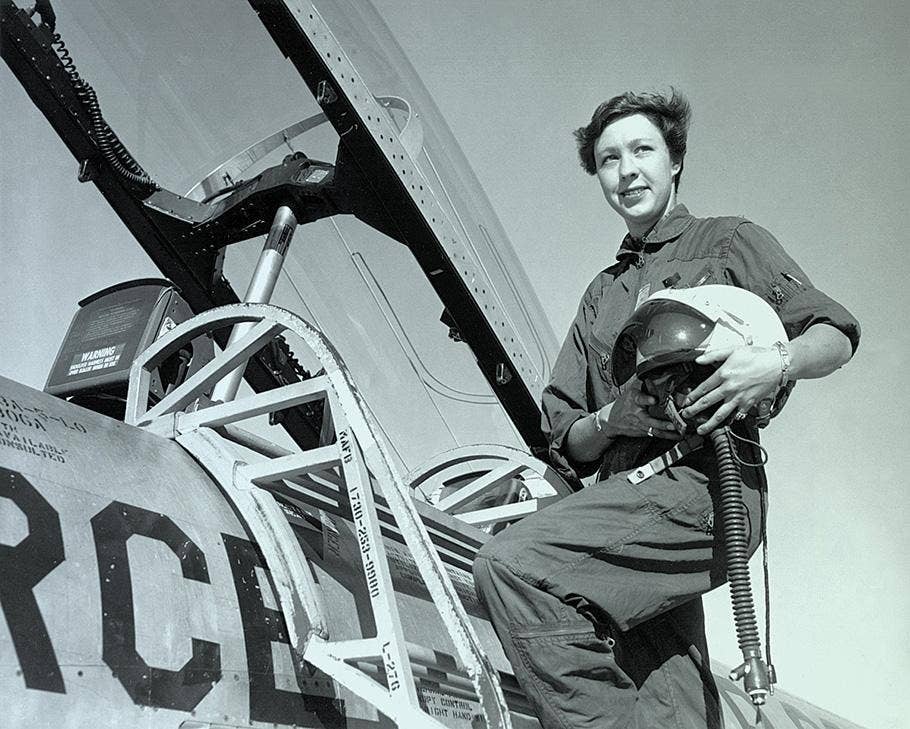Good Flying Reads: Mid-Level Flying, and On Being a Ferry Pilot
Jason Blair pulls back the curtain on mid-level flying, in An Aviator’s Guide to Middle-Altitude Flying, while former ferry pilot Kerry McCauley weaves an engrossing tale in Ferry Pilot: Nine Lives Over the North Atlantic.

FLYING Editor-in-Chief Julie Boatman recently read two books, one by Jason Blair and the other by Kerry McCauley.
Whenever I approach a new endeavor within the world of aviation, I not only scroll through YouTube for relevant content, but I also turn to the printed word.
Last fall, I had the opportunity to fly along on a ferry flight across the Atlantic in a TBM 940—getting a taste of extended flight in the mid-levels (10,000 ft to 25,000 ft msl) as well as learning the process for transiting over long stretches of open water.
In advance, I picked up a cool niche primer, An Aviator’s Guide to Middle-Altitude Flying by Jason Blair, to help me understand that flight environment more clearly. It wasn’t until a couple of months after the trip that I read Ferry Pilot by Kerry McCauley—and I’m kind of glad for that timing.
I think you’ll understand why in a bit.
Middle-Altitude Flying
Blair has crafted a series of titles in the Aviator’s Field Guide series, and they focus on segments of general aviation that have somewhat escaped detailed coverage. They include compact treatises on tailwheel flying, multiengine flying, and aircraft ownership.
In An Aviator’s Field Guide to Middle-Altitude Flying, Blair looks at the slice of the sky that is often overlooked because only a small segment of air traffic flies within its boundaries for any given period of time. Most piston airplanes stay below 10,000 ft (especially those that aren’t pressurized), and the jets climb quickly up through those layers to their optimal altitudes at FL280 and above.
Flight above 18,000 ft requires an instrument rating—and anything above 25,000 ft requires a high-altitude signoff. But there’s a lot of reasonably uncongested airspace in the mid-levels for the taking. Blair reviews emergencies, performance and fuel planning, weight and balance, navigation, weather, and aircraft mods.
One particular section concerns descent planning, and it mostly comprises a table to reference before approaching this critical but oft-overlooked flight segment. Simply put, coming down 10,000 ft or more prior to initiating an approach eats up quite a bit of mileage in the airplanes that are capable of flying at those altitudes—and too many pilots are caught off guard by this when they first make the transition.
Lots of good info here, and food for thought as you expand your own envelope.
Ferry Pilot
A couple of weeks ago, a friend handed me a book with the statement, “You need to read this.” She knew of my recent trip across the pond with ferry pilot Margrit Waltz and thought I would enjoy McCauley’s memoir, Ferry Pilot: Nine Lives Over the North Atlantic.
Oh man. I wonder if “enjoy” is the right word?
I was intrigued, because McCauley had been an entertaining guest on FLYING’s ILAFFT podcast, where he shared a couple of condensed (and PG) tales of his career flying light aircraft around the world.
So, I was somewhat prepared for the roller-coaster ride that his book takes you on—but not for the laugh-out-loud moments followed immediately by experiences (often the result of decision-making) so cringe-worthy I felt the hair rising on my neck though I rested on solid ground. Or I felt physically ill.
If I didn’t know the punchline (he survived), the read would be more nerve-wracking than fun. And it comes with McCauley’s self-own that he does not recommend his course of action in many of the episodes—he offers them up as lessons learned.
I, for one, am glad I read this after my first trip in a single-engine turboprop over the Atlantic. And I wouldn’t give it to any prospective pilot who may be too impressionable to take it as a cautionary tale rather than a guidepost.
But I have not laughed so hard at an aviation book in a long time—if ever.

Sign-up for newsletters & special offers!
Get the latest FLYING stories & special offers delivered directly to your inbox






